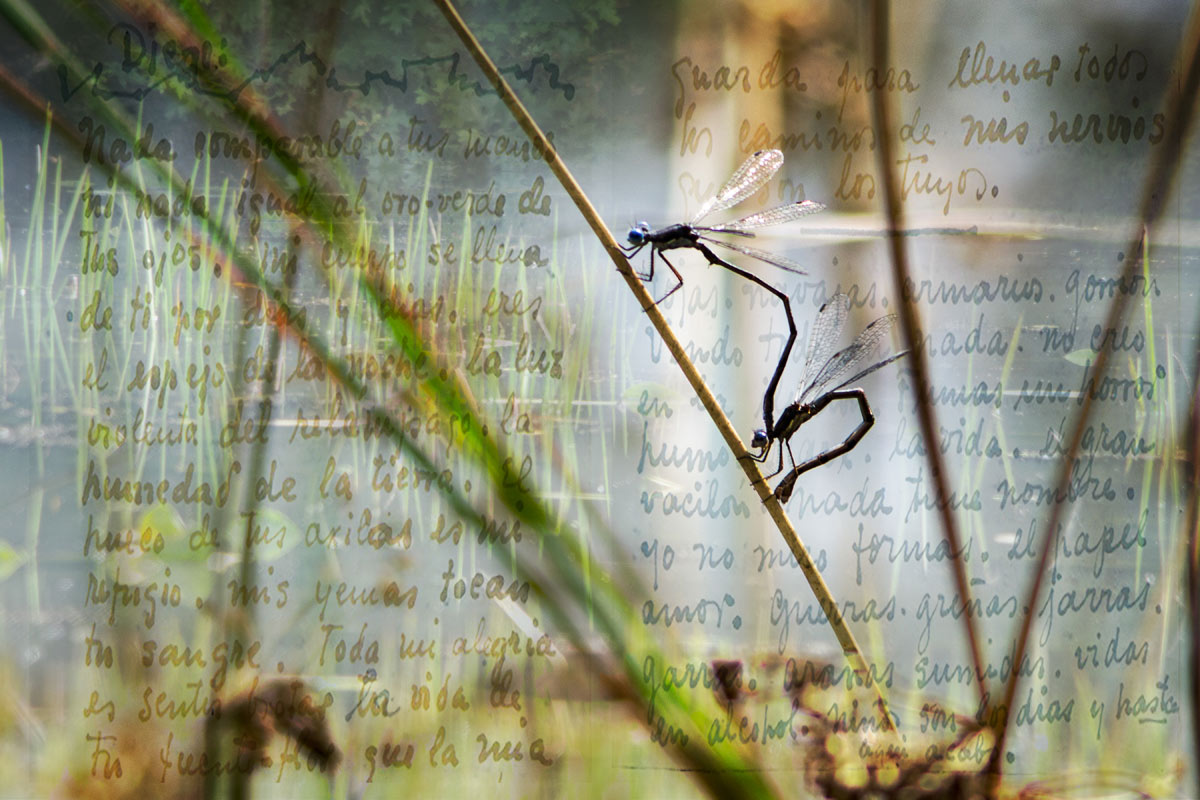
Damsel Flies mating. In the background love letter by Frida Kahlo to Diego Rivera in the background.
Sights and Insights

Damsel Flies mating. In the background love letter by Frida Kahlo to Diego Rivera in the background.
A few weeks ago Martha and I participated in a Walk to observe and learn about dragonflies and damselflies. The walk was a joint presentation of the Mengel Natural History Society and the Baird Ornithological Club, of which Ken Lebo, the group leader, is a member along with Tony “Doc” Schoch and Mike Slater, president of the BOC and nature columnist for the “Berks Country” weekly supplement to the Reading Eagle. Here is Kolleen Long’s account of the Hike in the Hamburg Item. She took better notes and did better follow up research than I did. Here are a few pictures I made during the excursion. I learned two things. First, there are a lot more species of dragonflies than I knew existed. Second, many of them are very difficult to photograph, some never perch.
Everyone likes to photograph flowers, including me. Contrarian that I am, however, I’ve resisted posting them to my blog. Procrastinating until I couldn’t bear it any longer. So here’s a big package. This year it seemed as though Mother Nature took her time with the blossoms. Meanwhile, all the grasses sprouted tall with great abandon in the cool weather. Mother Nature has stopped her procrastination, and so have I.
In honor of Earth Day and of the show opening tonight at Studio B in Boyertown, PA, Local by Local, this gallery focuses on trees and other vegetation — including crabgrass — the stuff on which animal life depends. Included in several images are bits of trash left in forested areas.
I’ve included information with each picture about the camera used to capture the picture and the software used to develop it including the company that converted my Pentax K10D into an infrared camera — Kolari Vision. Most of the other outfits that convert cameras that I found, or were recommended to me, only deal with Canikon cameras.
For those interested in understanding better understanding Infrared photography, false colors, and the surreal effects it produces read my 2009 article here. The article, which includes a basic summary of the physics of light, should be read by all landscape artists whatever their medium. I hope readers won’t get lost in the science, but it’s what makes me appreciate the magic of it all.
Much of the content is based on my early experiments using an old point and shoot that I converted myself in addition to using IR filters on other cameras. The article has been slightly updated with a cursory look at processing IR files shot in camera RAW and channel swapping to produce the blue sky effect. I recommend Laurie Klein’s Infrared Photography: Artistic Techniques for Brilliant Images for a more in-depth (and less technical) look at the art form.